the suspension bridges: the ponte nel cielo in val tartano and the cassandre footbridge in sondrio
Do you like adventure and adrenaline? In Val Tartano you can cross the Ponte nel Cielo, a 234-metre-long pedestrian bridge suspended 140 metres above the valley floor, connecting Campo Tartano (alt. 1,034 m) and the verdant pastures of Frasnino (alt. 1,038 m). It is one of the highest Tibetan bridges in Europe!
More info on https://www.valtellina.it/en/ponte-nel-cielo
Majestic views await also on the Cassandre footbridge, a family-friendly route from the centre of Sondrio to up high on the footbridge over the Mallero river, which links the villages of Mossini and Ponchiera. First opened in November 2021, this 145 metre-long footbridge crosses the gorges of the Mallero as it flows out of Valmalenco, soaring about the crashing water at a height of 100 metres
More info on https://www.valtellina.it/en/insights/trekking/the-cassandre-footbridge
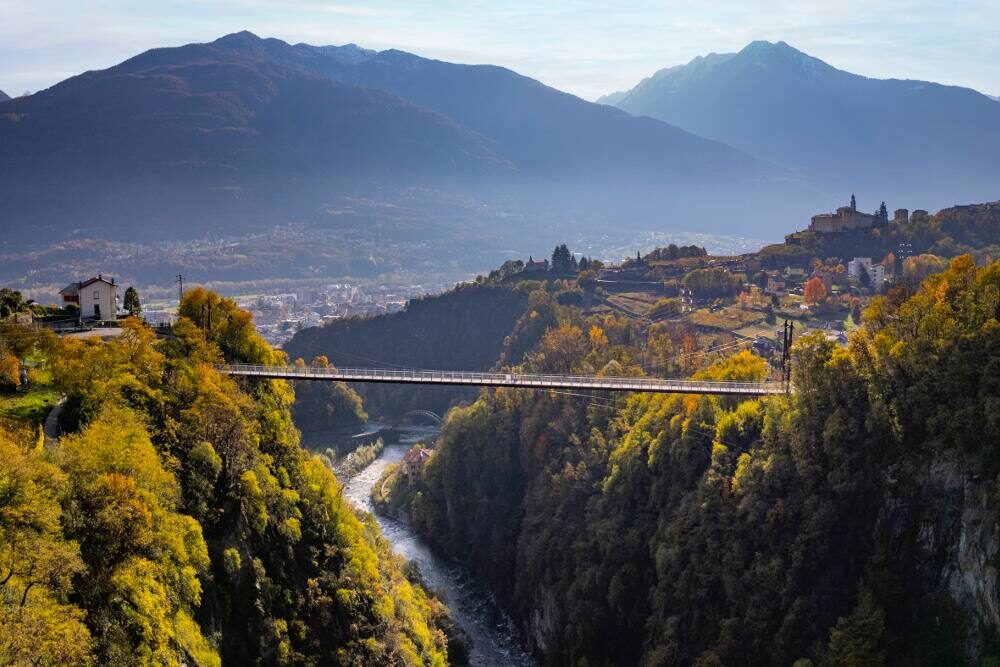
- The Cassandre footbridge in Sondrio, first opened in November 2021
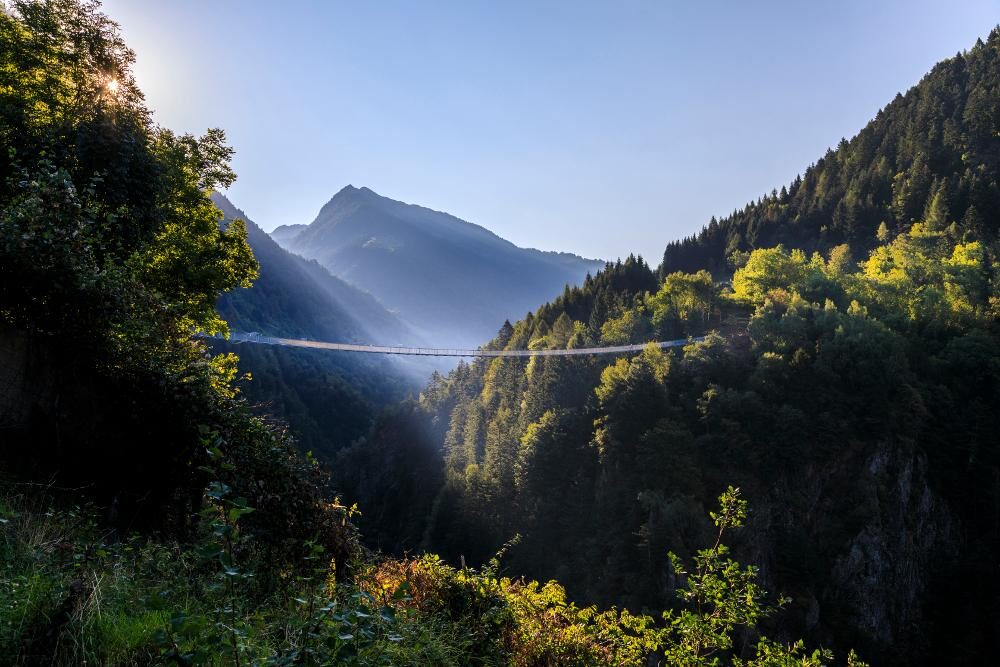
- The Ponte nel Cielo, suitable for all ages, including children, offers unique panoramic views
the st. giovanni nepomuceno bridge in chiavenna
In the old part of Chiavenna
it’s always worth admiring the Ponte di San Giovanni Nepomuceno with the
impressive statue of the saint after which the bridge is named. Crossing the River Mera, the view from
the bridge is a picture-perfect snapshot of the city’s ancient walls onto which
clusters of houses have been built. Keep walking until you reach Piazza Pestalozzi, a pretty and serene
square with a sixteenth-century octagonal fountain in its centre and buildings
from the same period surrounding it.
Lined with ancient buildings
and monuments, Chiavenna’s beautiful historic centre never fails to win over
the hearts of visitors to this Alpine town. Don’t miss the Palazzo Vertemate Franchi, a Renaissance masterpiece in Piuro, the
opulent Palazzo Salis that dates
back to the eighteenth century, or the
collegiate church of San Lorenzo, home to a famous baptismal font as well
as the Museo del Tesoro, the
Treasure Museum.
More info on: https://www.valtellina.it/en/chiavenna-e-dintorni
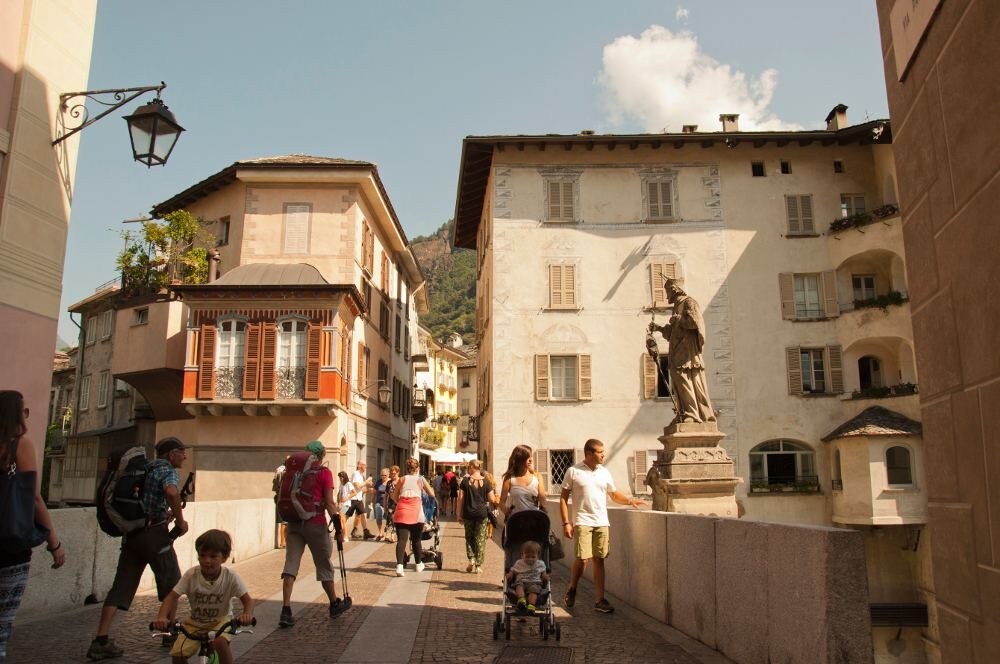
- The Ponte di San Giovanni Nepomuceno with the impressive statue
the ganda bridge in morbegno
Built in 1778 by the Milanese architect Francesco Bernardino Ferrari,
the Ponte di Ganda is another standout site in Valtellina that has done its
best to withstand the test of time. The origins of this crossing location date
back several centuries but it was wiped out by severe flooding. In its current
form, you can admire certain original characteristics that were carried over in
the reconstruction including the large 30 metre-high central arch flanked by
two symmetrical side arches.
Today, the bridge has become
a symbol of Morbegno. Once you’ve crossed it, a stroll into the town’s lively
old town is basically mandatory. Make time to explore its narrow alleyways and
boutique artisan shops, where you can acquaint yourself with the region’s local
produce, particularly the acclaimed Bitto DOP cheese.
More info on https://www.valtellina.it/en/morbegno-e-dintorni
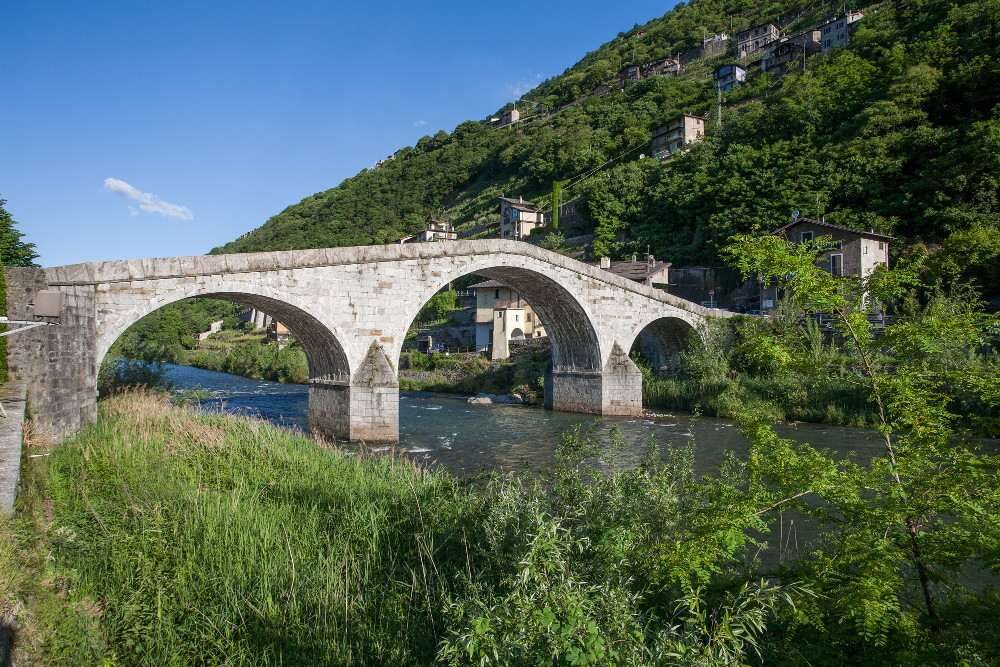
- The beautiful Ganda bridge, a symbol of Morbegno
the bridge of combo in bormio
Another historic gem
within Valtellina is Bormio’s Ponte di
Combo, which dates back to 1300 when it provided the only access to the
town from the Repubblica di Venezia via the Passo Gavia. While it has undergone
restoration work over the centuries, it still bears many of the original
features, namely the local grey stone and wide arch over the Frodolfo torrent.
In the centre, there are two shrines facing each other showing St John of
Nepomuk and the story of the holy crucifix.
Other than being steeped
in history, the Ponte di Combo also boasts a first-rate view over Bormio, which
hints at its once strategic location. Crossing the bridge, you can either head
towards the Chiesetta della Madonna del Sassello and a great walk into Valfurva
or towards Piazza del Kuerc, the beating heart of Bormio’s old town.
More info on https://www.valtellina.it/en/bormio
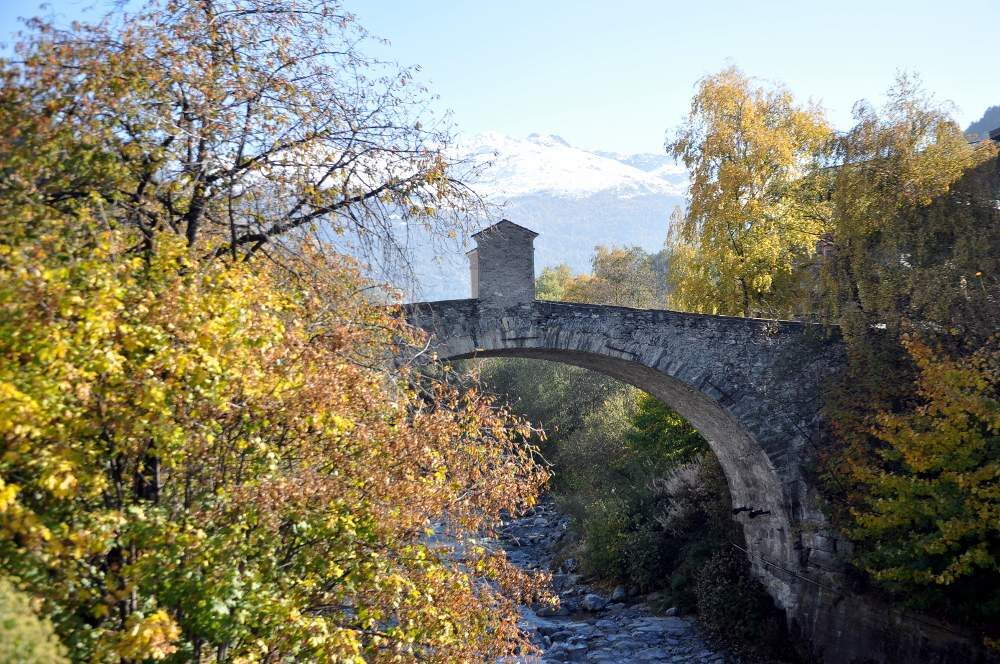
the tirano's bridge
Once a wooden
drawbridge, this spot now rolls out access to one of Tirano’s most iconic
sites, the Porta Poschiavina, which serves as an entrance to the old town along
with the Porta Milanese and the Porta Bormina. Now made of iron, the Ponte di
Tirano, which crosses the River Adda, escorts visitors into the old town
through a large brick doorway that once marked the start of the route towards
Poschiavo and the Bernina.
While the Porta
Poschiavina is undoubtedly the most important entrance to the town, it’s also
part of the Palazzo Pretorio, the former official residence of Tirano’s mayor.
Continue your walk to Piazza Cavour and Palazzo Marinoni, home of the town
hall.
Tirano is one of those rare, human-sized towns that’s rich in history
and easily walkable, so visitors can admire its wealth of buildings and villas
from previous centuries that were once home to the local nobility – these
include Palazzo Salis, Palazzo Venosta-Andres now Giacomini, and lastly, the
Palazzo Torelli with the Torre Torelli tower that rises up at the end of the
road of the same name
More info on https://www.valtellina.it/en/tirano-e-dintorni

- Porta Poschiavina, the most important entrance to the town



